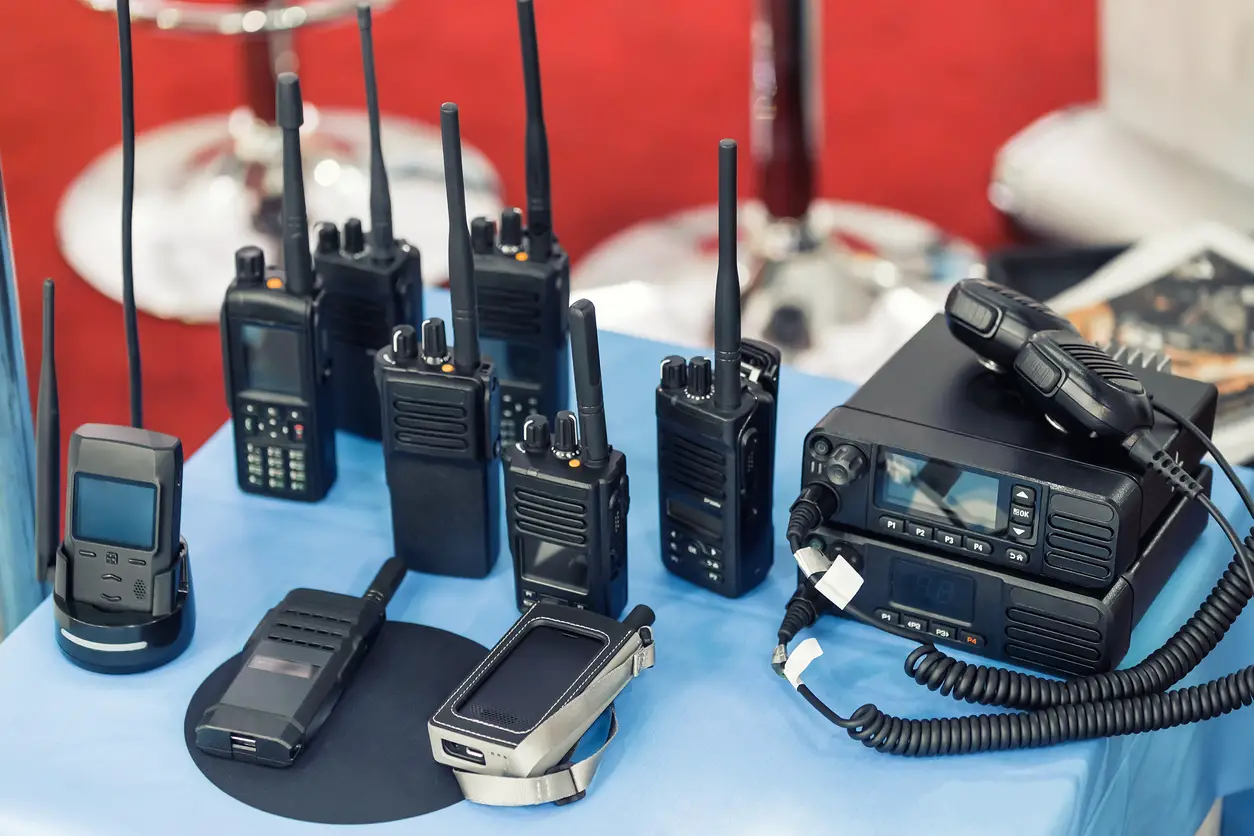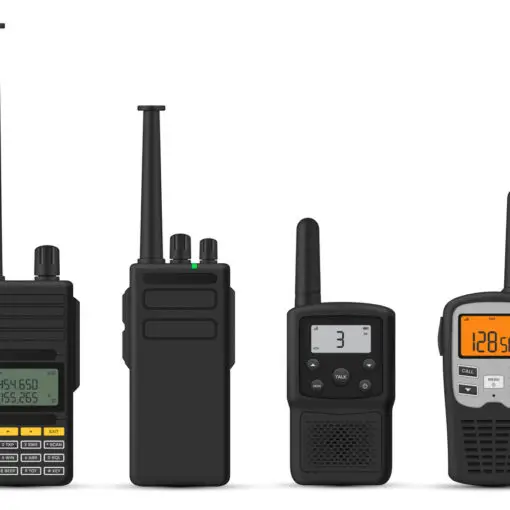Ham radio enthusiasts often explore various aspects of the hobby to increase their skills and enhance the experience. One such area is QRP (low power) operations, which involve using minimal power to transmit and communicate on the amateur radio bands. QRP operations present unique challenges that appeal to both new and experienced operators, providing opportunities to hone their technical skills and foster creativity within the ham radio community.
QRP generally refers to transmitting with power levels of 5 watts or less for CW (Morse code) and other digital modes, and no more than 10 watts for SSB (Single Side Band) voice operations. This low-power approach emphasizes the importance of using power-efficient modes, efficient antennas, and advanced operating techniques to maximize one’s ability to make contacts and communicate over long distances.
Despite the limitations in power, QRP operations remain popular among ham radio operators worldwide, as they provide an opportunity to work the globe with minimal resources. This eco-friendly approach to amateur radio communication promotes resourcefulness and adaptability, making it an appealing option for both beginners and seasoned hams alike.
The QRP Challenge
QRP operations, or low-power ham radio activities, present a unique challenge to operators who must rely on their skills and expertise to make contacts across long distances. Typically involving the use of power output up to 5W, it has become a popular hobby among ham enthusiasts who appreciate the thrill of successful QRP communications source.
One advantage of this type of operation is the reduced interference encountered. Lower-powered radios tend to produce less interference, making them an ideal choice for operators living in areas with strict RF noise regulations source. This encourages QRP enthusiasts to hone their knowledge and focus on the efficient utilization of the available power.
Power-efficient modes, such as CW and PSK31, have become popular in QRP operations since they allow skilled operators to make contacts across larger distances using low power. As a result, many operators have found this an exciting way to explore their abilities and construct low-power transmitters and transceivers, which can be both affordable and challenging to build source.
In order to be successful in QRP operations, ham radio operators must develop various strategies, such as enhancing their antenna systems, learning optimal times for communication, and becoming proficient in reading band conditions source. Additionally, the practice of QRP operation can help prepare operators for emergency situations, where they may need to rely on limited power resources and communication over vast distances.
Through embracing the QRP challenge, ham radio operators can prove their talents in efficient communication and develop a deeper understanding of the art of radio operation.
Ham Radio Boost: Lessons Learned in Amateur Radio
“New hams (and old hams) will find lots of practical advice in this book. It won’t help you operate the latest digital mode, or help you work more DX, but it will help you get more out of amateur radio.” -Dan, KB6NU, author and blogger
Equipment for Low Power Operation
Operating a ham radio station with low power (QRP) can be both challenging and rewarding. To ensure a successful QRP operation, it is important to have the right equipment. This section will focus on the essential components required for low-power operations, including transceivers, antennas, and batteries and power sources.
Transceivers
When it comes to low-power operation, a good transceiver is essential. Many transceivers are designed specifically for QRP operations and come with built-in features that help reduce power consumption. For instance, some transceivers have lower output power levels, typically around 5 watts or less, making them ideal for QRP activities. Moreover, these transceivers often include power-efficient modes like CW and PSK31, which enable skilled operators to communicate effectively even with limited output power.
Antennas
A good antenna plays a vital role in QRP operations. The choice of antenna depends on various factors, such as the operating location, budget, and specific communication needs. Wire antennas, including dipoles, end-fed half-waves, and loop antennas, are portable, cost-effective, and popular choices among QRP operators. These antennas are known for their ability to deliver excellent performance in remote locations, allowing operators to establish long-distance contacts even with low-power transceivers.
Batteries and Power Sources
Since QRP operations often involve portable and off-grid activities, batteries and other power sources play a crucial role in ensuring a seamless experience for the operator. It is essential to choose a suitable power source that can efficiently power your transceiver and other peripherals without generating excessive weight or size. Some popular options for QRP operators include:
-
Lithium-ion batteries: These lightweight and powerful batteries provide excellent energy density, making them an ideal choice for portable QRP operations.
-
Solar panels: Solar panels can serve as a renewable, eco-friendly power source for QRP operators in remote locations with sufficient sunlight.
-
External battery packs: Sometimes, external battery packs are used to increase the runtime of QRP equipment during extended outings or emergency situations.
By carefully selecting the right equipment, QRP operators can enjoy the challenges and rewards of low-power ham radio operations while maintaining efficiency and reliability.
QRP Operating Modes
QRP operation, or low-power operating, is an exciting challenge for many Ham radio enthusiasts. With power outputs of up to 5W, hams are able to make international contacts while using less power. This section will cover some of the most popular operating modes used in QRP: CW (Morse Code), SSB (Single Sideband), AM, Digital Modes, FM, and Data Modes.
CW (Morse Code)
CW, or Continuous Wave, is an operating mode that involves the use of Morse code. Morse code is a system of representing letters and numbers using combinations of short and long signals, also known as “dits” and “dahs”. In QRP, CW is one of the most power-efficient modes, allowing for communication over long distances with minimal power consumption. This makes it highly popular among low-power enthusiasts.
SSB (Single Sideband)
SSB, or Single Sideband, is a form of amplitude modulation (AM) that eliminates one of the sidebands and the carrier, resulting in a more efficient use of power compared to traditional AM. SSB is widely used in QRP for voice communication, as it requires less power than other voice modes to achieve similar performance.
AM
Amplitude Modulation (AM) is a mode that modulates the amplitude of the radio wave to transmit information. While it is less power-efficient compared to SSB, some QRP operators still prefer to use AM for its characteristic sound quality and nostalgic appeal. However, due to its higher power consumption, it may not be the most suitable choice for longer-range communication.
Digital Modes
Digital modes are communication methods that transmit data as binary codes, allowing for efficient usage of power and bandwidth. Popular digital modes in QRP include PSK31, FT8, and JT65. These modes often provide increased performance and reliability over analog modes, making them ideal for low-power operation.
FM
Frequency Modulation (FM) is a mode where the frequency of the radio wave is modulated to transmit information. While FM provides clear audio quality, it is generally less power-efficient compared to other modes, especially in narrow-band applications. As a result, FM tends to be less popular in QRP operation, but can still be used for short-range communication.
Data Modes
Data modes involve the transmission of non-voice data, such as messages and telemetry. Some popular data modes used in QRP operation include AX.25 packet radio, APRS, and RTTY. These modes can be more power-efficient than voice modes, making them suitable for QRP operation in some instances. Utilizing data modes allows operators to overcome some limitations of traditional voice communication.
In conclusion, QRP operating modes each offer unique advantages for different communication needs and preferences. By understanding the strengths and limitations of each mode, operators can maximize the potential of their low-power Ham radio setups, achieving success in both local and global contacts.
Ham Radio Boost: Lessons Learned in Amateur Radio
“New hams (and old hams) will find lots of practical advice in this book. It won’t help you operate the latest digital mode, or help you work more DX, but it will help you get more out of amateur radio.” -Dan, KB6NU, author and blogger
Propagation and Frequency Bands
Propagation is the way in which radio signals travel through the atmosphere. It plays a crucial role in the success of QRP or low power operations. Several factors, such as the time of day, solar activity, and atmospheric conditions can affect propagation and the quality of radio communication.
Frequency bands are sections of the radio spectrum allocated for various types of communication. Ham radio operators typically operate within designated bands in the LF, MF, HF, and VHF ranges. These bands each have different characteristics that affect the range and reliability of QRP operations.
Low frequency (LF) and medium frequency (MF) bands are found below 3 MHz. They are primarily for long-range communication, such as maritime and aviation, and are less popular for ham radio QRP operations. These bands can be challenging for low-power operators because the signals travel long distances through groundwave propagation but incur higher signal attenuation.
High frequency (HF) bands, ranging from 3 MHz to 30 MHz, are well-suited for QRP operations. They are popular among ham radio enthusiasts for long-distance communication, as they utilize the ionosphere to refract signals. This phenomenon, known as skywave propagation, allows signals to travel over thousands of kilometers with relatively low power. Optimal conditions for HF QRP can be found on HAM Radio for Non-Techies with a helpful chart indicating the conditions of the bands.
Very high frequency (VHF) bands, which span from 30 MHz to 300 MHz, are common for short-range communication and local amateur radio activities. These frequencies are less suited for QRP long-distance communication as signals typically follow line-of-sight propagation. However, advanced techniques such as tropospheric ducting and meteor scatter can enable successful low-power communication over longer distances on VHF bands.
Choosing the right frequency band, combined with propagation knowledge, is essential for QRP operators. By operating during favorable conditions and using efficient antennas, impressive results can be achieved with as little as 5 watts of power.
Advantages and Limitations
QRP (low power) operations in Ham radio provides several advantages and also faces some limitations.
One of the most significant advantages is the ability to communicate with lower power consumption, making QRP operations more environmentally friendly. Ham radio operators can communicate over long distances without relying on traditional communication infrastructure, which is an advantage of low-power operations in Ham radio. Lower power usage also makes it possible to use portable devices powered with battery sources, making QRP ideal for outdoor and mobile activities.
With the use of power-efficient modes like CW and PSK31, skilled operators can work the globe and participate in international QRP events. This aspect not only helps operators to test their skills but also allows them to meet new people across the world and learn about their cultures.
Challenges faced by QRP operators include weak signals and increased interference from the environment. The lack of signal clarity can lead to a challenging communication experience, requiring more listening and patience to connect with other stations. However, overcoming these limitations can be rewarding and often leads to increased enjoyment for many QRP operators.
QRP is also advantageous for those looking to take on construction projects. Building low power transceivers is an affordable yet challenging hobby for enthusiasts, allowing them to develop skills in electronics assembly and design.
One significant limitation of QRP operations is the antenna system. Many operators often use inefficient antennas leading to reduced communication ranges (ARRL). Selecting the right equipment, such as a QRP transceiver and an efficient antenna, is crucial to a better experience in low-power communications.
In conclusion, QRP (low power) operations in Ham radio provide an environmentally friendly communication method, allow operators to engage with others internationally, and present exciting challenges for participants. However, the limitations, such as reduced signal strength and less efficient antennas, must be acknowledged and mitigated to maximize the QRP experience.
QRP Clubs and Organizations
QRP clubs and organizations are dedicated to promoting low power Ham radio operations. These clubs and organizations emphasize on the importance of efficiency, skill, and enjoyment when operating QRP stations. Members usually share their experiences of building and operating low power radio communication equipment and systems.
The American QRP Club was formed in June 2003 and has since attracted enthusiasts interested in low power operation. The club is not affiliated with any specific geographic area, and its membership does not meet monthly like many regional radio clubs. The diverse community of members brings together a wealth of knowledge and experience in the field of QRP.
Another well-known organization is the GQRP Club, which was formed in 1974 by Rev. George Dobbs G3RJV. The club’s mission is to promote QRP and low power radio operation for amateur radio enthusiasts. The GQRP Club welcomes both licensed Ham operators and those without a license, making it an inclusive space for anyone interested in the pursuit of QRP.
Additionally, the QRP ARCI is a club dedicated to low power amateur radio operating. They maintain a list of QRP clubs and groups from different regions, such as the “AK/QRP” Club in Alaska and the Austin QRP Club in Texas. These regional clubs offer opportunities for local enthusiasts to come together and share their passion for low power radio communication.
In conclusion, QRP clubs and organizations provide a platform for individuals interested in low power Ham radio operations to connect, learn, and share their experiences. These communities foster an environment of knowledge exchange and camaraderie, ultimately contributing to the growth and development of the QRP amateur radio community worldwide.
Participation in QRP Events
QRP events are a great way to challenge yourself in low-power amateur radio operations and connect with other operators who share your passion for efficient communication. There are numerous events and activities that cater specifically to QRP enthusiasts, including contests, Summits on the Air, and Parks on the Air.
Contests
Many QRP contests are organized throughout the year, allowing operators to compete with each other in making the most contacts using low power. QRP contests often have specific rules and guidelines governing acceptable power levels and frequencies. Participants can submit their logs after the contest to compare their performance with others, and awards are often given to top scorers.
Some popular QRP contests include:
- The QRP ARCI Contests: These events are organized by the QRP Amateur Radio Club International and have varying themes, such as the Spring QSO Party and the Fall QSO Party.
- Straight Key Night: This annual event organized by the American Radio Relay League (ARRL) encourages QRP operators to use a manual telegraph key for Morse code contacts.
- QRP Fox Hunt: This contest puts a spin on the traditional contest format by designating several “fox” stations that QRP operators, or “hounds,” seek to locate and contact.
Summits on the Air (SOTA)
Summits on the Air is a popular worldwide amateur radio program where operators set up QRP stations on mountain peaks and other high-elevation locations. Their goal is to make contacts with other operators, who often are at lower elevations or even indoors. SOTA activators log their contacts and earn points, which contribute to personal and regional leaderboards.
To get started with SOTA, participants select an eligible summit, hike to the top, and set up their equipment. SOTA emphasizes operating in challenging environments, so QRP radios are particularly well-suited for these types of activations due to their compact size and low power consumption.
Parks on the Air (POTA)
Similar to SOTA, Parks on the Air encourages amateur radio operators to set up QRP stations in national parks, state parks, and other designated outdoor areas. Sharing a similar format to SOTA, participants log contacts they make and earn points that are tracked on a leaderboard.
To participate in POTA, operators choose a designated park, set up their equipment, and establish contacts with other operators. This activity promotes environmental awareness and brings more people into amateur radio operating by providing a fun and engaging activity for QRP enthusiasts.
Getting Started with QRP
Entering the world of QRP (low-power) operations in ham radio can be both exciting and rewarding. QRP essentially means operating with minimal power, often 5 watts or less. This requires a combination of skills, knowledge, patience, and a focus on efficiency.
To get started with QRP, it is essential to understand the basics of ham radio operation. Familiarity with different modes of communication, such as CW (Morse code) and digital modes like PSK31, is beneficial since these modes are usually power-efficient. Additionally, enhancing your knowledge of antenna design can be a game-changer, as an effective antenna setup can significantly improve your signal’s performance.
One of the most important factors in successful QRP operations is patience. Sometimes, due to low power output and variable propagation conditions, making contacts may take longer than expected. Becoming proficient in QRP requires consistent practice and dedication to honing your skills.
When beginning with QRP, it is a great idea to start with the equipment and antennas you already have. Simply reduce your transmitter’s power output to 10 watts or less and dive into the world of low-power operations. This approach can help you identify the limitations and areas for improvement in both your equipment and operating skills.
While operating QRP, it is crucial to ensure both your transmitter and receiver are power-efficient. Numerous QRP-specific transceivers are available on the market, offering excellent performance despite their minimal power consumption. Additionally, using battery power sources, such as solar panels or portable solutions, can further enhance the efficiency of your QRP station.
In summary, getting started with QRP is an exciting journey that involves improving your skills, knowledge, and patience in ham radio operation. By focusing on efficiency and minimal power consumption, you can uncover the joys of low-power communication and become a proficient QRP operator.
Emergency Communications and Outdoor Activities
Ham radio QRP (low power) operations are an excellent choice for emergency communications and outdoor activities. QRP radios emphasize portability and consume less power than traditional radios, allowing for extended operation in remote locations. With power outputs of no more than 5 Watts for Morse or data modes, and 10 Watts pep for voice, QRP radios are a popular option for outdoor enthusiasts, campers, and emergency communication setups.
One of the significant advantages of QRP operation in emergency communications is its ability to provide essential communication services when conventional methods fail. Amateur radio operators often establish organized communication networks for government and emergency officials, as well as non-commercial communication for private citizens affected by disaster situations, such as power outages and severe weather events. The Amateur Radio Emergency Service (ARES) is one such group of licensed amateurs dedicated to providing communication assistance during emergencies.
When it comes to outdoor activities, the portability of QRP radios makes them particularly appealing to campers, hikers, and other outdoor enthusiasts. The limited power output of these radios ensures that you can carry a smaller, lighter battery pack while still enjoying the hobby of amateur radio communication in nature. Moreover, QRP radios are often designed with rugged cases and components, ensuring durability in various environmental conditions.
To achieve optimal performance, it is crucial to pair your QRP radio with an effective antenna. A beam antenna on a tall tower is ideal, but in outdoor situations, a portable and lightweight antenna setup is more practical. Many antennas designed for QRP operation are available, offering a balance between performance and portability.
In conclusion, Ham radio QRP operations have become an increasingly popular choice for both emergency communications and outdoor activities. The portability and efficient power usage of these radios make them an attractive option for those seeking reliable communication during emergencies or simply enjoying the hobby in nature.
QRP Projects and Building
QRP operations in ham radio involve using low power, typically 5 watts or less, which presents a unique set of challenges and rewards for amateur radio enthusiasts. A popular aspect of QRP is the construction of low-power transmitters and transceivers, which can be both affordable and satisfying to build ARRL.
One of the main reasons hams enjoy building QRP radios and accessories is their portability. These low-power devices can be easily carried and operated on batteries, making them perfect for outdoor adventures or emergency situations onallbands.com.
When starting with QRP projects, it’s essential to choose designs with clear instructions and achievable goals. Numerous resources cater to beginners, such as the ARRL book “More QRP Power,” which includes various project ideas and articles from QST and QEX magazines. Other resources, like ham radio blogs, forums, and YouTube, can also provide valuable insights and tutorials Bulletproof Ham Radio.
As you venture into QRP and ham radio building, it’s beneficial to explore different modes of communication. Power-efficient modes like CW (morse code) and PSK31 are popular among low-power operators, as they allow for more extended range and better overall performance ARRL.
Remember, patience and practice are crucial when working on QRP projects, especially for beginners. As your skills and knowledge grow, you’ll find rewarding experiences in low-power ham radio operations, connecting with other stations worldwide, and enhancing your abilities as a radio operator.
Popular QRP Radios and Brands
The world of QRP (low power) operation in Ham radio is exciting and full of choices when it comes to equipment. Several brands stand out for their quality, innovation, and reputation, making them popular choices for QRP enthusiasts.
Icom is a prominent brand in the QRP community, thanks to their feature-rich and portable transceivers. The Icom IC-705 is a compact, all-mode, all-band QRP radio that supports voice, CW, and digital modes, making it an excellent choice for low-power Ham radio operations. With up to 5 watts of power on battery operation and 10 watts on external power, this versatile radio is perfect for taking on the go and setting up a portable Ham radio station wherever you choose.
When learning the QRP basics, having a reliable and easy-to-use transceiver is essential. Elecraft is another well-known brand in the QRP community, offering the popular KX3 and KX2 transceivers. These radios boast an intuitive interface, a wide range of features, and the ability to operate in various modes, including CW, voice, and digital. Elecraft radios are known for their excellent performance even with input power in the milliwatts range.
Finally, Yaesu is a prominent player in the QRP radio market. Known for their rugged design and reliability, Yaesu’s FT-817ND and its successor, the FT-818, are popular choices for low-power operation. Both models provide all-mode, all-band operation and are portable, making them suitable for outdoor adventures or setting up a simple Ham radio station at home.
In conclusion, QRP enthusiasts have excellent options when it comes to choosing a low-power transceiver for their Ham radio operations. Brands like Icom, Elecraft, and Yaesu offer a range of popular, reliable, and versatile radios, catering to various preferences and requirements within the QRP community. Whether you’re a seasoned operator or just starting with the QRP basics, these brands and their radios can provide a satisfying and successful low-power experience.






